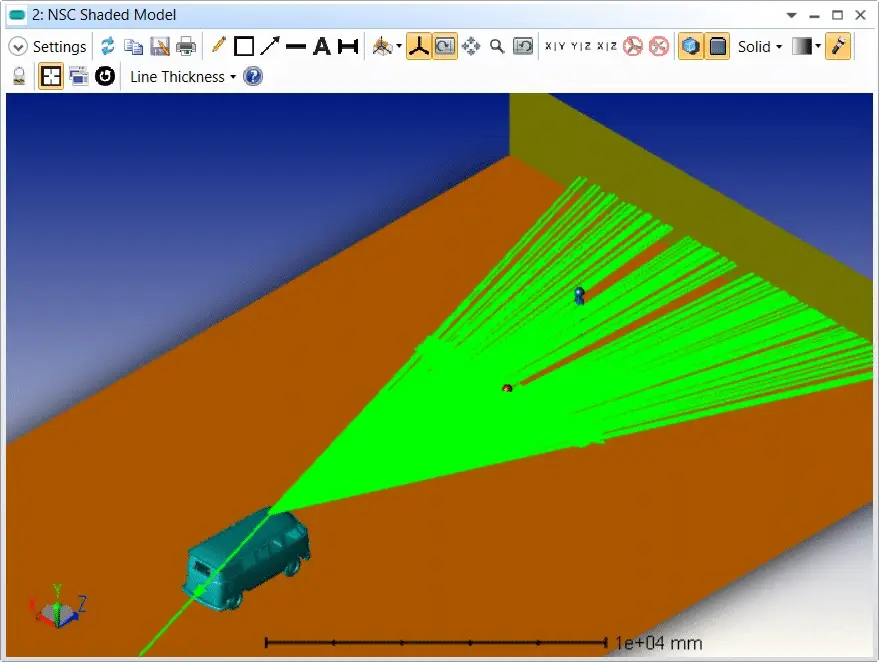This article provides a discussion and examples off the performance goals of illumination systems. The question of “What makes a good illumination design?” will be unravled through the units and targets that are common in illumination design.
The units of measure of an illumination system
| Radiometric | Photopic | ||||
| Term | Symbol | Name | Units | Name | Units |
| Flux | Φ | Power | Watts (W) | Luminous flux | lumens (lm) |
| Flux/area | E | Irradiance | W/m² | Illuminance | lm/m² or lux |
| Flux/solid angle | I | Radiant intensity | W/sr | Luminous intensity | lm/sr or candela (cd) |
| Flux/area⋅solid angle | L | Radiance | W/m²⋅sr | Luminance | lm/m²⋅sr or cd/m² or nit |
Below is a schematic image of the above photometric units. With a visual representation of the units, perhaps it is more intuitive to understand the different units of measure.

Source: PencilofRays.com
Key performance parameter: Uniformity
Angular uniformity: uniformity over a solid angle

Surface uniformity: uniformity per unit area

Key performance parameter: Throughput and efficiency
Several factors can affect the amount of light passing through the system:
- The throughput or Étendue
- Absorption of the optical material
- Reflectivity of reflective surfaces
- Fresnel reflection between the optical surfaces
Key performance parameter: Color
The perceived color of light is quantified by its chromaticity. Chromaticity is defined by the International Commission on Illumination or Commission internationale de l’éclairage (CIE), and the color matching functions give us the CIE 1931 chromaticity coordinates.

Reference Source: https://www.zemax.com/


